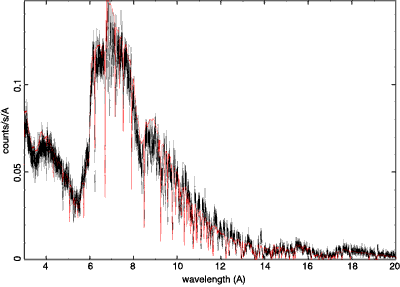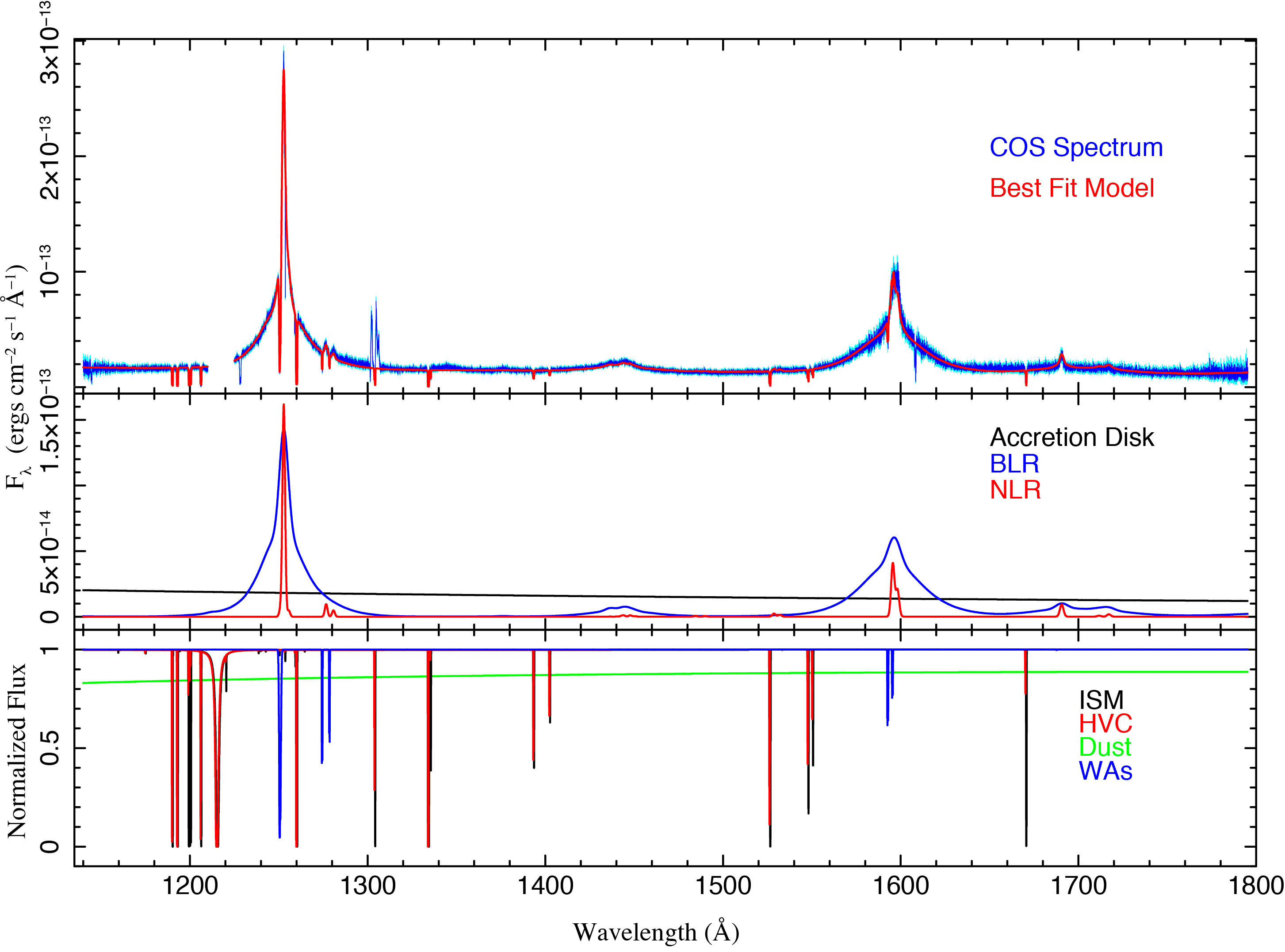XSTAR Home Page
-

Two component XSTAR model fit to the 800 ks Chandra HETG observation of NGC 3783. Model fit performed in xspec11 using the warmabs analytic model.
-

XSTAR model fit to the HST/COS combined emission and absorption line spectrum of Mrk 290. Top panel: data and model fit; lower panels: emission and absorption model components (Zhang et al. 2014).
-

XSTAR model fit to the Hitomi observation of the Perseus cluster.
What is XSTAR?
XSTAR is a computer program for calculating the physical conditions and emission spectra of photoionized gases.How Do I Get XSTAR?
Xstar is avaible in several different ways.- The XSTAR package is now integrated and distributed with the HEASARC's standard HEASOFT package, so if your facility has this package installed then you already have access to xstar.
- XSTAR is also available as a standalone package. The standalone XSTAR (or the full HEASOFT), is available in either source or binary versions and it can be downloaded from here .
- Current develop version
- The known issues page
- A utility has been created for extracting atomic data and rates from the xstar database. This utility is a standalone fortran program, which calls many of the xstar routines, and returns the rate (forward and reverse) and raw atomic data for a single type of rate for a single ion. It can be found here
- Warmabs, an analytic model for calculating warm absorber and emitter spectra within xspec is available. This has the advantage that it avoids the intrinsic approximations associated with use of tables for absorption with variable abundances treated as multiplicative parameters, and the intrinsic clumsiness of the use of tables. It also allows the use of arbitrary spectral resolution, not limited by the internal xstar spectral resolution. To use it, download the tarfile, unzip and untar in your user area, and follow the installation instructions contained in the README. This includes the analogous routine which simulates the absorption (and emission) by a gas in coronal equilibrium.
- To access older releases of warmabs please contact us.
- A version of xstar which allows for parallel computation of a grid of models has been developed by Michael Noble of MIT. pvm_xstar fosters parallel execution of XSTAR over large, time-consuming sets of parameters.
- A php tool for making the xstinitable.par file needed by xstar2xspec is provided by D. Maitra of the University of Michigan here. This is a GUI form which produces the file in ascii. No error checking is provided.
Online Documentation
XSTAR documentation is included as part of the standard source distribution and is also viewable here or can be downloaded as a pdf. The doxygen pages are hereRelated Files
- Sample xstar output from optically thin photoionized model, alpha=1 power law, line emissivities
- Sample xstar output from optically thin photoionized model, alpha=1 power law, line opacities
- Sample xstar output from optically thin photoionized model, alpha=1 power law, RRC emissivities
- Sample xstar output from optically thin photoionized model, alpha=1 power law, RRC opacities
- Sample XSPEC table models
- Line list.
- Line finding list.
- Level list.
- Subroutine xstar
- Postscript plots of atomic rates(42 Mbytes).
- An ascii version of the xstar database (28 Mbytes).
- The xstar database sorted according to process. (16 Mbytes).
- Sample output: Lexington H II region.
- Sample inputs.
- Atomic data.
- UADB, a comprehensive database for atomic data..
Conferences
- Lexington Conference with information on the Lexington Benchmarks for photoionization codes.
